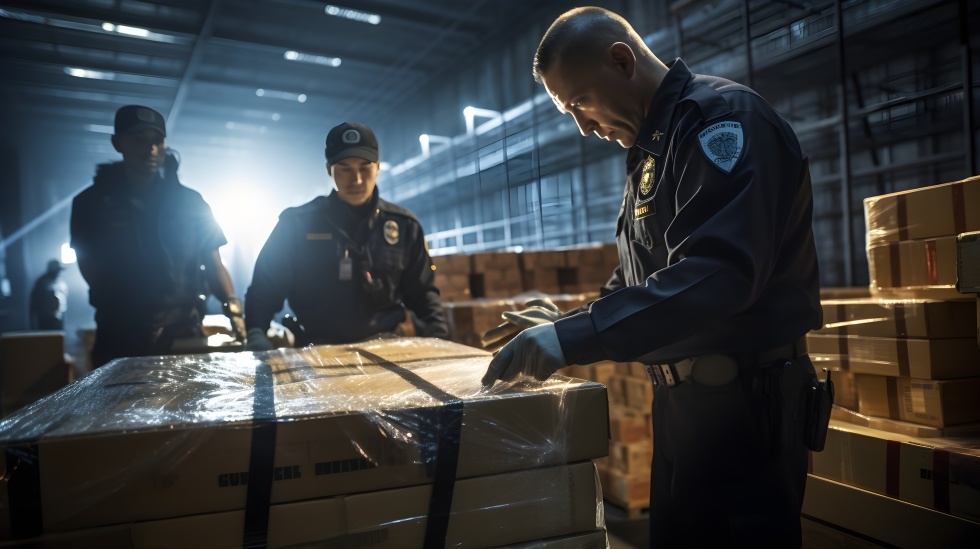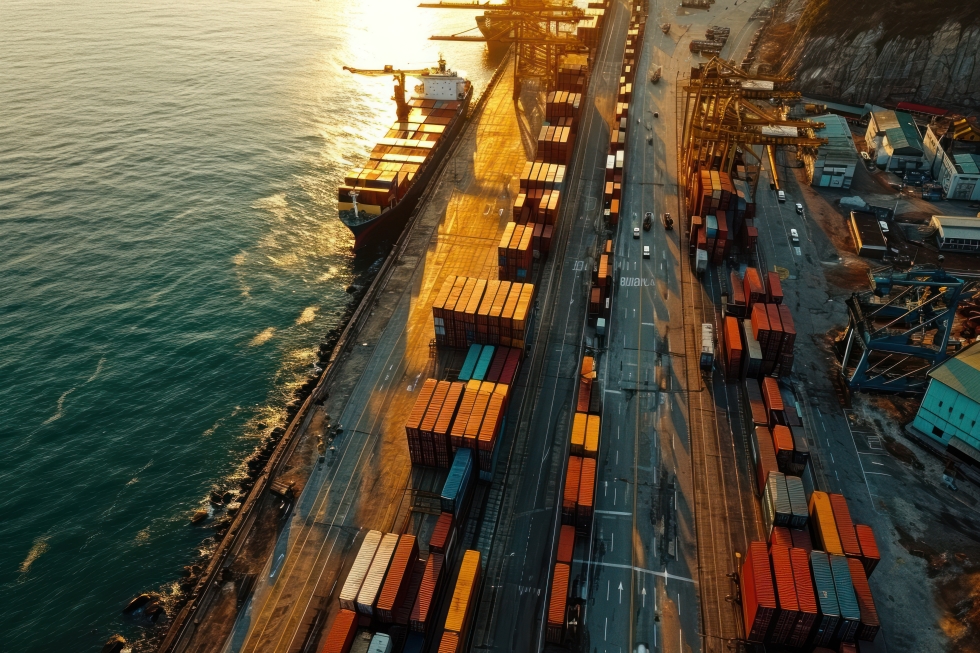A Comprehensive Guide to Global Import Procedures
Unlock the essentials of global import procedures with our concise guide. Learn about customs clearance, documentation, and compliance to facilitate smooth international transactions.

In today's globalized marketplace, mastering country-specific import procedures is paramount for companies engaged in international trade. Understanding the intricacies of import regulations, customs clearance processes, and documentation requirements is essential to ensuring smooth and compliant cross-border transactions. This comprehensive handbook serves as a valuable resource for importers, providing insight and practical guidance on navigating import procedures in various countries and regions.
Introduction to Import Procedures
Import procedures are the backbone of international trade, governing the movement of goods across borders and ensuring compliance with regulatory requirements. As companies expand their operations globally, it becomes imperative to become familiar with the import procedures of target markets. By understanding the nuances of import regulations, companies can streamline their supply chains, mitigate risk, and capitalize on new market opportunities.
Navigating import procedures involves a series of steps, including customs clearance, submission of documentation, and payment of import duties and taxes. Each country maintains its own set of import regulations, which can vary significantly based on factors such as product type, origin, and destination. Importers must stay abreast of evolving import requirements and adjust their strategies accordingly to ensure seamless cross-border trade.
What Are Import Procedures?
Import procedures refer to the set of steps and regulations that govern the entry of goods into a country from abroad. These procedures are designed to facilitate the smooth flow of trade while ensuring compliance with customs and regulatory requirements. Import procedures typically include the following key aspects
- Customs clearance: Importers must comply with customs clearance procedures, which involve submitting documentation and paying applicable duties and taxes to obtain clearance for their goods.
- Documentation requirements: Importers must prepare and submit various documents, including commercial invoices, packing lists, certificates of origin, and import licenses, to facilitate customs clearance.
- Tariffs and Duties: Importers may be subject to import duties, tariffs, and other taxes imposed by the importing country. Understanding the tariff schedule and duty rates applicable to imported goods is essential for accurate costing.
- Regulatory Compliance: Import procedures may involve compliance with regulatory requirements related to product standards, safety regulations, labeling requirements, and import licensing.
- Customs Declarations: Importers must accurately declare the details of imported goods to customs authorities, including the value, quantity, and description of the imported items.
- Customs examination: Customs authorities may conduct physical inspections or audits of imported goods to verify compliance with import regulations and to detect prohibited or restricted items.
By following import procedures, importers can ensure compliance with legal and regulatory requirements, facilitate the smooth flow of goods across borders, and minimize the risk of customs delays or penalties.

Streamlining the Import Process with Technology
In today's digital age, technology plays an important role in streamlining the import and customs clearance process. Automated systems and electronic platforms allow importers to submit documentation, track shipments, and communicate with customs authorities in real-time.
Implementing a robust customs import clearance system not only improves efficiency but also reduces the risk of errors and delays associated with manual processing. Many countries offer electronic customs portals and online platforms that facilitate seamless import procedures for businesses of all sizes.
Improve export import procedures and documentation
In addition to understanding import procedures, exporters must also become familiar with export-import procedures and documentation to effectively facilitate international trade transactions.
Importance of Proper Documentation
Accurate and complete documentation is paramount in export-import transactions. From commercial invoices and bills of lading to export licenses and certificates of origin, each document plays a critical role in ensuring compliance with export-import regulations and facilitating customs clearance at both ends of the transaction.
Leverage Preferential Trade Agreements
Preferential trade agreements, such as free trade agreements (FTAs) and regional trade blocs, offer exporters preferential tariff rates and streamlined customs procedures when trading with partner countries. By leveraging these agreements, exporters can reduce costs and gain a competitive advantage in international markets.
Navigating Tariff Quotas and Relief Programs
Understanding tariff quotas and duty relief programs is essential for exporters seeking to optimize their export-import processes. Tariff quotas allow the importation of a certain amount of goods at reduced or zero duty rates during a specified period, promoting trade while protecting domestic industries.
Meanwhile, duty drawback programs, such as duty drawback on returned goods, provide exporters with ways to mitigate import duties and taxes on goods that are brought back into the country after being exported.
Country-specific Import Guidelines
European Union Import Procedures
The European Union (EU) is one of the largest trading blocs in the world, consisting of 27 member states with varying import regulations. Importers seeking access to EU markets must navigate a complex customs clearance process governed by EU customs law. The customs import clearance process requires the submission of detailed documentation, including commercial invoices, packing lists, and certificates of origin.
Importers importing goods into the EU are subject to import duties and tariffs, which vary depending on the classification of the imported goods and their country of origin. The EU operates under a Common Customs Tariff (CCT), which sets out the rates of duty applicable to different categories of goods. Importers must calculate and pay the applicable duties and taxes to clear their goods through customs.
China Import Procedures
China is a major destination for global trade, offering huge market potential for businesses worldwide. However, importing goods into China requires a thorough understanding of the country's import procedures and regulations. Importers must navigate China's complex customs clearance process, which includes submitting accurate documentation and complying with strict import requirements.
Importers must prepare comprehensive documentation to facilitate the import customs clearance process in China. Key documents include the commercial invoice, bill of lading, packing list, and certificate of origin. In addition, certain products may require special permits or certifications to comply with Chinese regulations, adding another layer of complexity to the import process.
Importing Into India
India is one of the world's fastest-growing economies, offering lucrative opportunities for companies engaged in international trade. However, importing goods into India requires compliance with the country's import regulations, which are governed by the Customs Act and related rules. Importers must obtain an Importer Exporter Code (IEC) from the Directorate General of Foreign Trade (DGFT) to facilitate imports.
The customs clearance process in India involves several stages, including pre-arrival documentation, customs examination, and assessment of import duties and taxes. Importers are required to submit a bill of entry to the customs authorities and provide accurate details of the imported goods. Customs officials examine the shipment to verify its contents and assess the applicable duties and taxes before granting clearance for release.
Import Procedures in Tanzania
Tanzania's import procedures are regulated by the Tanzania Revenue Authority (TRA) and other relevant government agencies. Importers must comply with the country's import regulations, which include licensing requirements, product standards, and customs documentation. Compliance with Tanzania's import procedures is essential to accessing the country's vibrant market and facilitating trade activities.
Importers importing goods into Tanzania are required to submit several documents to the customs authorities, including the bill of lading, commercial invoice, and certificate of origin. In addition, certain goods may require special permits or certificates to comply with Tanzanian import regulations. Understanding documentation requirements and the customs clearance process is essential to ensure a smooth import process into Tanzania.
UK Import Procedures
The United Kingdom's exit from the European Union has introduced new import procedures and regulations for companies importing goods into the UK. Importers will need to navigate the complexities of post-Brexit customs clearance procedures, including customs declarations, import VAT and duties. Understanding the impact of Brexit on import procedures is essential for businesses looking to maintain seamless trade with the UK.
Importers importing goods into the UK must comply with the customs import clearance process, which involves the submission of comprehensive documentation to HM Revenue & Customs (HMRC). Documentation requirements include the commercial invoice, packing list and customs declaration form. Importers must accurately declare the value and nature of the imported goods to facilitate customs clearance and avoid delays.
Import Procedures in Kenya
Kenya's import procedures are regulated by the Kenya Revenue Authority (KRA) and other trade facilitation agencies. Importers must comply with Kenya's import regulations, which include customs documentation, product standards, and licensing requirements. Understanding Kenya's import procedures is essential for companies wishing to enter the Kenyan market and expand their trading activities.
Importers importing goods into Kenya must prepare and submit a number of documents to the customs authorities, including the bill of lading, commercial invoice, and certificate of conformity. In addition, certain goods may require special permits or licenses to comply with Kenyan import regulations. Navigating the customs clearance process and documentation requirements is critical to ensuring efficient import operations in Kenya.
Customs Clearance in Dubai
Dubai serves as a major hub for international trade, offering streamlined customs clearance procedures and state-of-the-art infrastructure for importers and exporters. The Dubai Customs Authority oversees the customs clearance process, ensuring compliance with import regulations and trade facilitation measures. Importers must follow Dubai's customs clearance procedures to expedite the clearance of their goods and avoid delays.
Importers importing goods into Dubai are required to submit comprehensive documentation to the Dubai Customs Authority, including the import declaration, commercial invoice and certificate of origin. Customs officials conduct inspections and assessments to verify the accuracy of the documentation and ensure compliance with import regulations. Understanding the documentation and declaration requirements is essential for a smooth customs clearance in Dubai.
Import Procedures in Ethiopia
Ethiopia's import procedures are regulated by the Ethiopian Revenues and Customs Authority (ERCA) and other regulatory agencies responsible for trade facilitation. Importers must comply with Ethiopia's import regulations, which include customs documentation, product standards, and import licensing requirements. Understanding the regulatory framework is critical for companies wishing to import goods into Ethiopia.
Importers importing goods into Ethiopia must comply with the customs clearance process, which involves submitting documentation to the Ethiopian Revenues and Customs Authority (ERCA). Documentation requirements include the commercial invoice, bill of lading, and import declaration. Importers must also comply with product standards and labeling requirements to ensure compliance with Ethiopian import regulations.
Saudi Arabia Customs Regulations
Saudi Arabia has strict customs regulations for importing goods into the Kingdom. Importers must comply with Saudi customs procedures and regulations, which are enforced by the Saudi Customs Authority. Understanding Saudi Arabia's customs regulations is essential for companies wishing to import goods into the Kingdom and engage in trade activities.
Importers importing goods into Saudi Arabia are required to pay import duties and taxes according to the Kingdom's customs tariff schedule. The customs clearance process involves the submission of comprehensive documentation to the Saudi Customs Authority, including the commercial invoice, bill of lading, and import declaration. Importers must comply with Saudi customs regulations and procedures to facilitate timely clearance of goods and avoid penalties.
Export Portal for Seamless International Trade
As you navigate the complexities of import procedures and customs clearance, partnering with Export Portal can streamline your international trade transactions and unlock new opportunities for growth and expansion.
At Export Portal, we understand the importance of efficient and compliant import-export operations. Our platform offers a comprehensive suite of tools and resources designed to simplify trade processes, mitigate risk, and enhance your competitiveness in global markets.






Comments 0